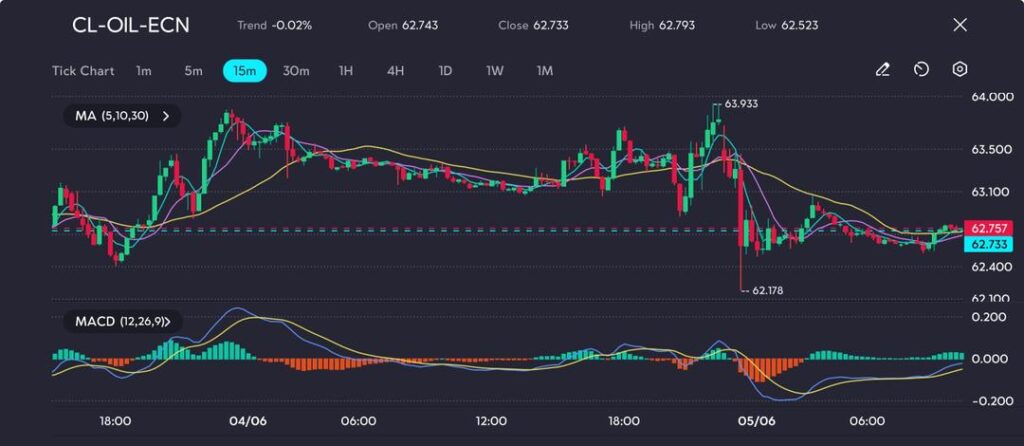
Oil markets are feeling the strain as plans for increased output meet signs of weakening demand. With major producers like Saudi Arabia signalling supply hikes and consumption slowing in key economies such as China and the US, concerns about a potential oversupply are growing. This imbalance is driving cautious sentiment and adding volatility to price movements.
West Texas Intermediate (WTI) crude oil futures fell below $63 per barrel on Thursday, extending recent losses as investor sentiment cooled amid a flurry of supply-heavy developments. At the core of the decline is Saudi Arabia’s apparent shift in production strategy.
According to reports, Riyadh is advocating for an OPEC+ production increase of at least 411,000 barrels per day in August, with further hikes on the table for September.
The push comes as the Kingdom seeks to reclaim market share during what is traditionally a peak demand period in the summer months.
However, the strategy appears to be twofold. Saudi Arabia has simultaneously cut prices for July-loading crude bound for Asia — marking the lowest levels in nearly four years.
This discounting reflects subdued demand from major importers like China, where industrial activity remains lacklustre and refinery throughput shows limited momentum.
The combination of rising supply and weaker demand has triggered market concerns about potential oversupply heading into the third quarter, particularly if global economic activity remains sluggish under the pressure of ongoing trade frictions.
Midweek data from the US Energy Information Administration (EIA) provided little relief. Although crude oil inventories saw a slight drawdown, much larger-than-expected builds in both gasoline and distillate stockpiles weighed heavily on market sentiment.
Gasoline stocks increased by over 3 million barrels — more than double the forecasted 1.5 million barrel rise — raising red flags about weakening consumer demand.
This is particularly worrying with the US driving season now underway, a period typically associated with higher fuel consumption.
Combined with Saudi Arabia’s plans to ramp up output, the disappointing inventory report has amplified fears that the market may be heading into a supply-demand imbalance.
From a technical standpoint, WTI crude oil prices are trading within a narrow range after recent volatility.
On 4 June, the price reached an intraday high of $63.93 during the US session before swiftly retreating to $62.18 amid profit-taking.

This $62.18 level has held as key support going into the Asian session on 5 June. Since then, prices have rebounded modestly and are consolidating near $62.73–$62.75.
The convergence of moving averages around this zone indicates a lack of clear direction, with low trading momentum.
The MACD histogram is beginning to shift into positive territory after a prolonged dip, but flat signal lines suggest neither bulls nor bears are in firm control.
A decisive break above the $63.00 level could pave the way for a test of resistance near $63.50–$63.90.
On the downside, a failure to maintain support at $62.50 may open the door to further declines towards $62.20 or even $61.80.
Short-term dips below $62.50 may attract buying interest, but continued weakness in gasoline demand and the prospect of increased Saudi-led supply could put renewed pressure on prices.
Click here to open account and start trading.